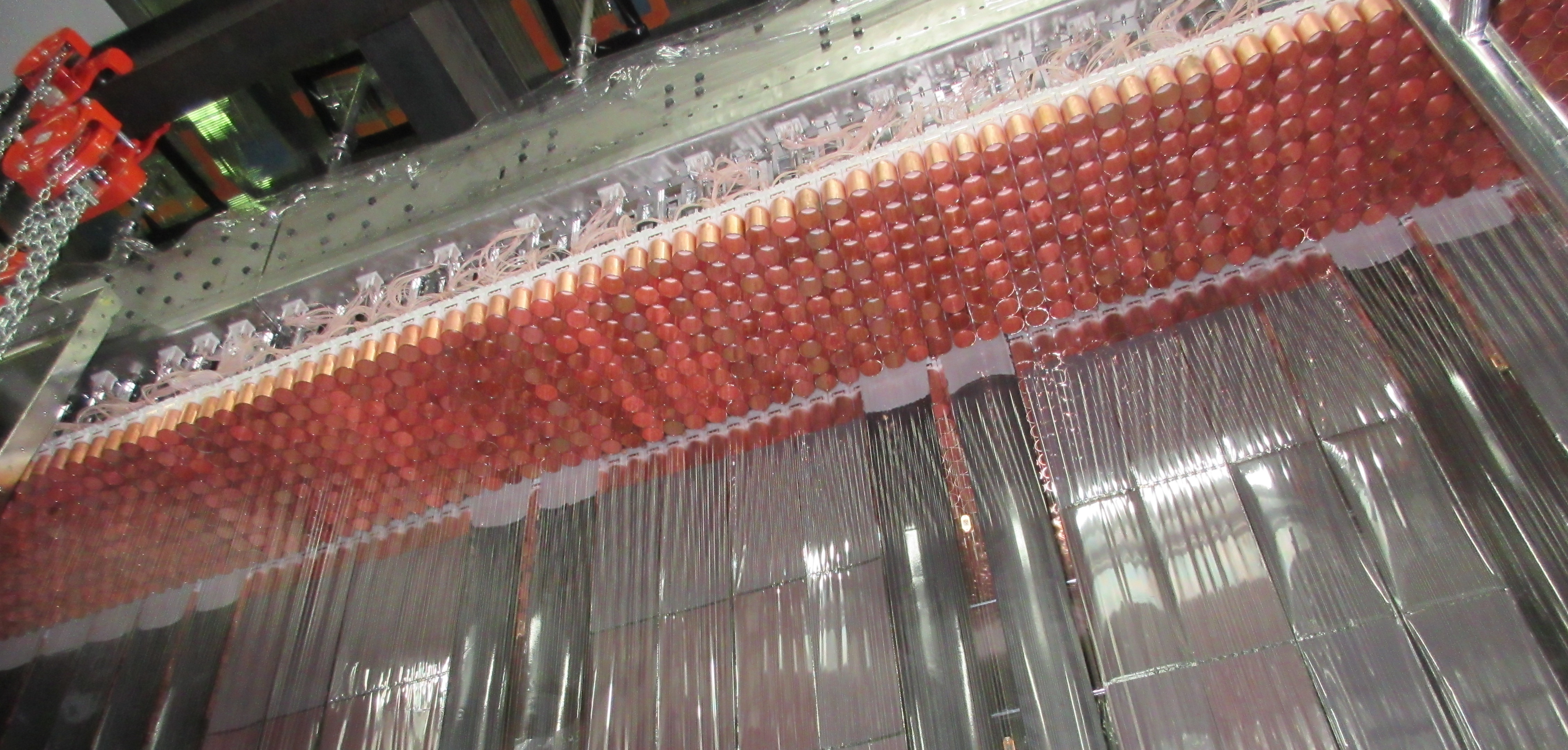Why is the universe made of matter?
SuperNEMO
Since 2016, I’ve been working on the SuperNEMO experiment, a new detector that we are building under a mountain in the LSM underground lab, in the French Alps. SuperNEMO is looking for a process called neutrinoless double-beta decay. Double-beta decay is a rare radioactive decay that has been observed in 13 isotopes - where two neutrons in an atomic nucleus decay to protons, producing two electrons and two antineutrinos - tiny, invisible particles of antimatter. Like all known processes in the universe, this creates both matter (electrons) and antimatter (the antineutrinos).
However, there is a theory, popular in the scientific community, that suggests that neutrinos, which are uncharged, might be Majorana particles - in other words, that they might be their own antiparticles. In this case, it should be possible that the double-beta decay could take place producing just the two electrons, with no (anti)neutrinos in the final state. If this process - neutrinoless double-beta decay - was observed, not only would it tell us important information about the nature of the neutrino, but it would be the first observation of a process that creates matter without creating antimatter. This would be huge news - especially since we know that we live in a universe made only of matter, and not of antimatter, but we don’t know how that came about.
You can find lots more information about SuperNEMO, and how it looks for neutrinoless double-beta decay, in the SuperNEMO website, which I designed and developed. My main role in the SuperNEMO project is as analysis coordinator, where I work with and advise the students and researchers working on analysis tasks for the experiment. I also sit on the steering and speakers’ committees of the experiment, and the technical and insititutional boards.
I have also taken many trips to the LSM, where I have been heavily involved in the installation of SuperNEMO’s fine-grained tracker. This is key to SuperNEMO’s unique ability to not only measure particle energies, but to track the trajectories and momenta of the individual particles in a decay event. With this extra power, SuperNEMO will be able to tell not only whether a neutrinoless double-beta decay happened, but how it happened. By looking at the topologies of the Standard Model double-beta decays, we can also learn about the nuclear processes that govern the decays - the possiblities are really unique and exciting!

